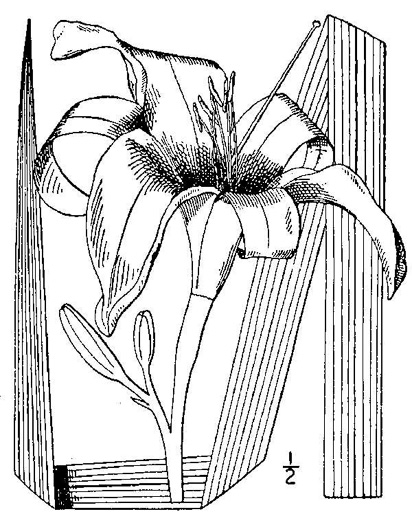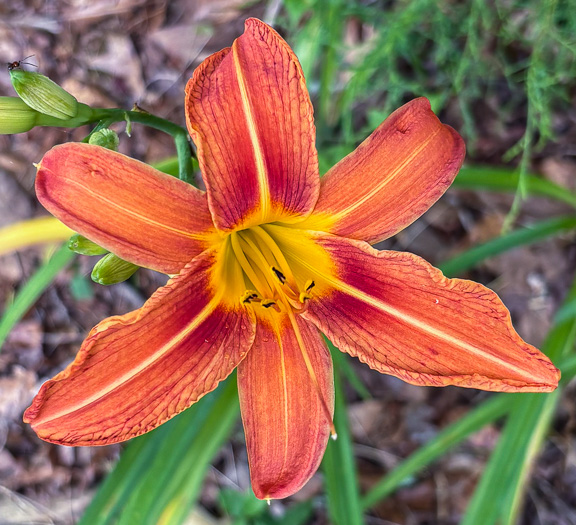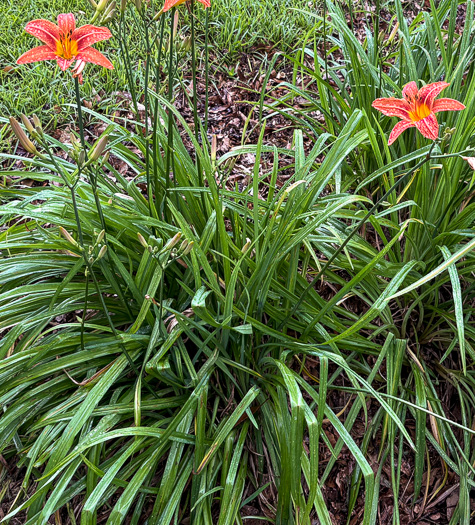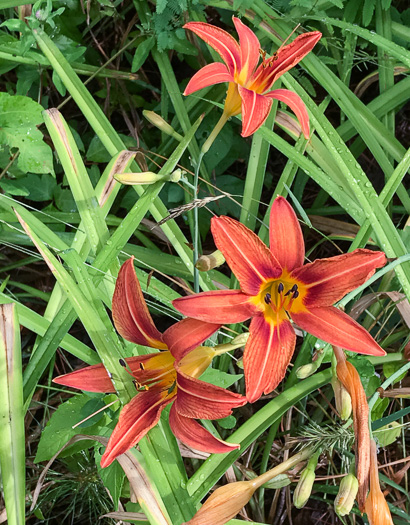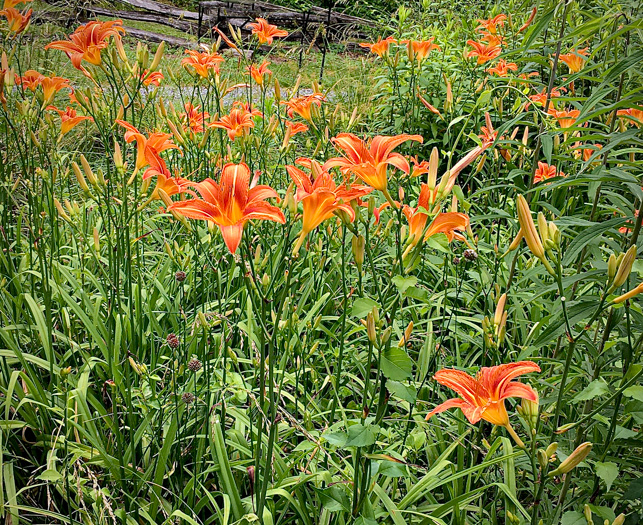Spermatophytes (seed plants): Angiosperms (flowering plants): Monocots: Asparagales
WEAKLEY'S FLORA OF THE SOUTHEASTERN US (4/24/22):
Hemerocallis fulva
FAMILY
Hemerocallidaceae
Go to FSUS key
Dig deeper at SERNEC, a consortium of southeastern herbaria.
Check out EDDMapS.org to see where this has been reported.
Learn more about Orange Daylily from the Vascular Plants of North Carolina.
SYNONYMOUS WITH
PLANTS NATIONAL DATABASE:
Hemerocallis fulva
FAMILY
Liliaceae
SYNONYMOUS WITH Flora of North America
Hemerocallis fulva
SYNONYMOUS WITH VASCULAR FLORA OF THE CAROLINAS (Radford, Ahles, & Bell, 1968) 041-31-001:
Hemerocallis fulva FAMILY Liliaceae
COMMON NAME:
Orange Daylily, Tawny Daylily, Roadside Daylily
To see larger pictures, click or hover over the thumbnails.
JK Marlow jkm250530_0678
May Greenville County SC
Flowers tawny-orange (or variants), not fragrant; inner tepal margins wavy, per Weakley's Flora (2018).
JK Marlow jkm250530_0685
May Greenville County SC
Leaves in basal cluster, linear, to 3' tall (1" wide) and arching, smooth, per Wildflowers of the Atlantic Southeast (Cotterman, Waitt, & Weakley, 2019).
Stephanie C. Brundage scb_20210608hayesville108
June Clay County NC
Clay County Native Botanical Garden
Commonly cultivated, frequently escaping, per Weakley's Flora (2022).
WEAKLEY'S FLORA OF THE SOUTHEASTERN US (4/24/22):
Hemerocallis fulva
FAMILY
Hemerocallidaceae
SYNONYMOUS WITH
PLANTS NATIONAL DATABASE:
Hemerocallis fulva
FAMILY
Liliaceae
SYNONYMOUS WITH
Flora of North America
Hemerocallis fulva
SYNONYMOUS WITH
VASCULAR FLORA OF THE CAROLINAS (Radford, Ahles, & Bell, 1968) 041-31-001:
Hemerocallis fulva
FAMILY
Liliaceae
If a search such as "Carex leptalea var. leptalea" doesn't deliver the results you want, try "Carex leptalea".
Or, to minimize chances of a misspelling, try just "Carex le".
Less is more: If "pencil flower" doesn't deliver the results you want, try "pencil".

